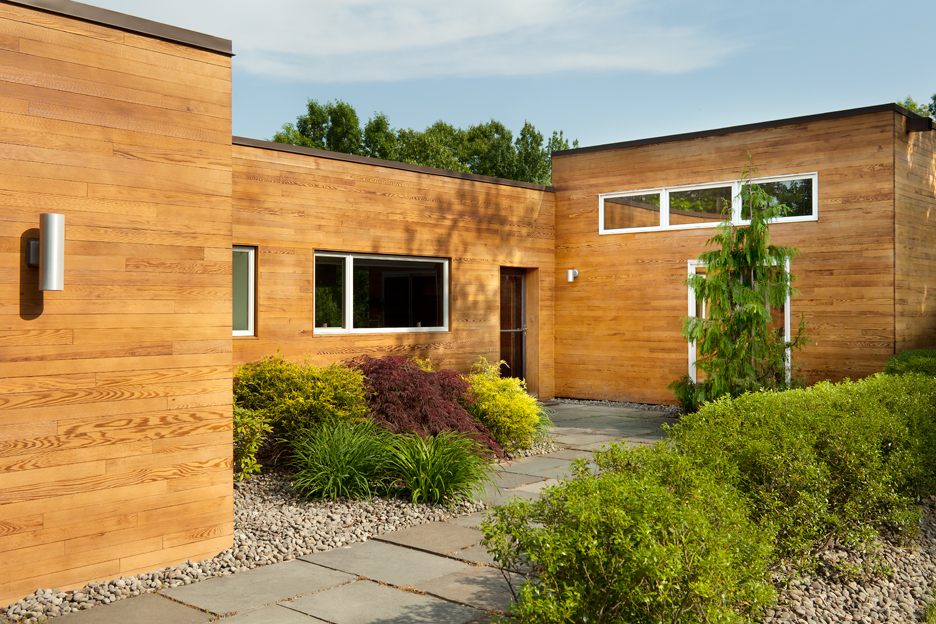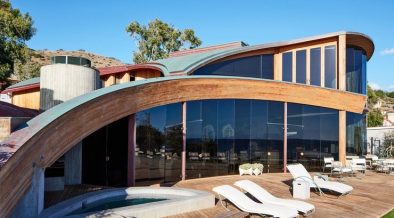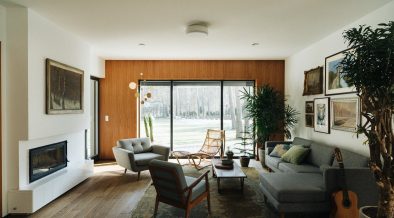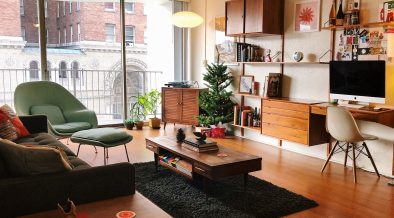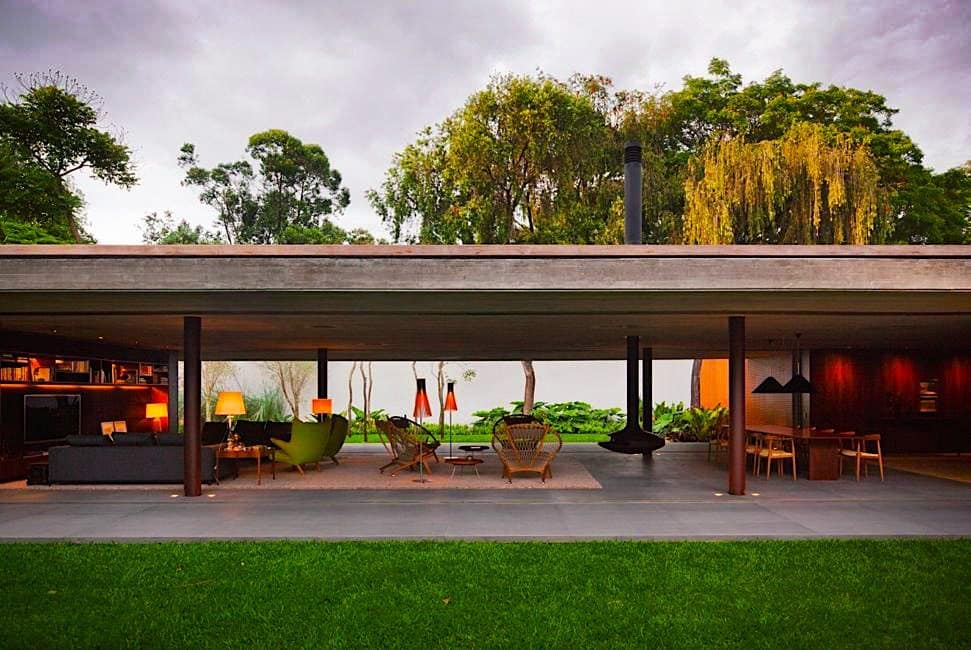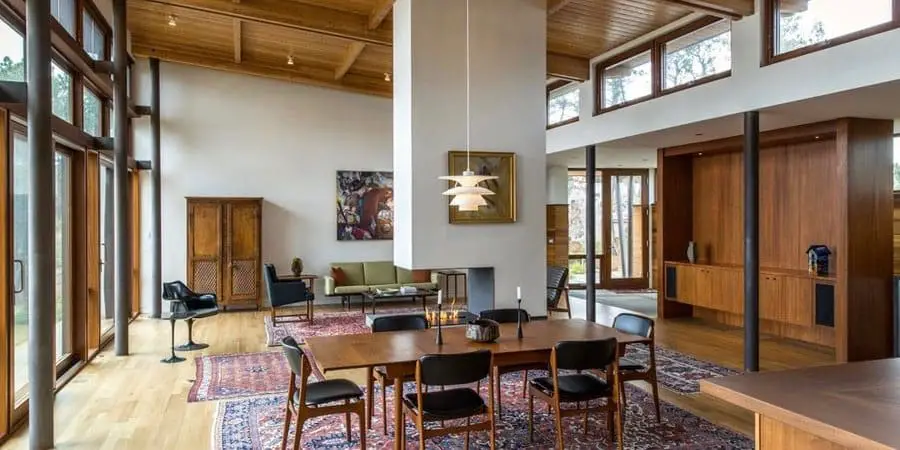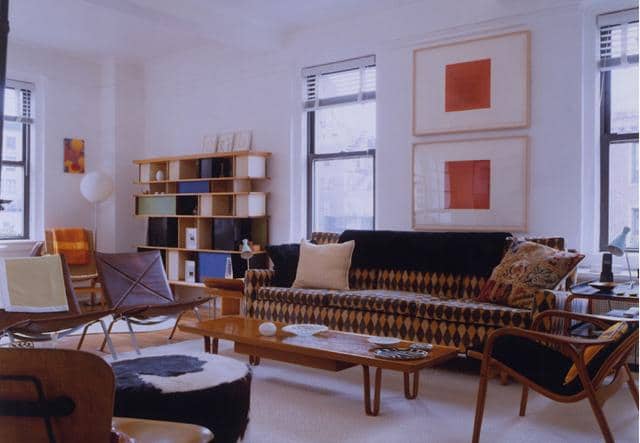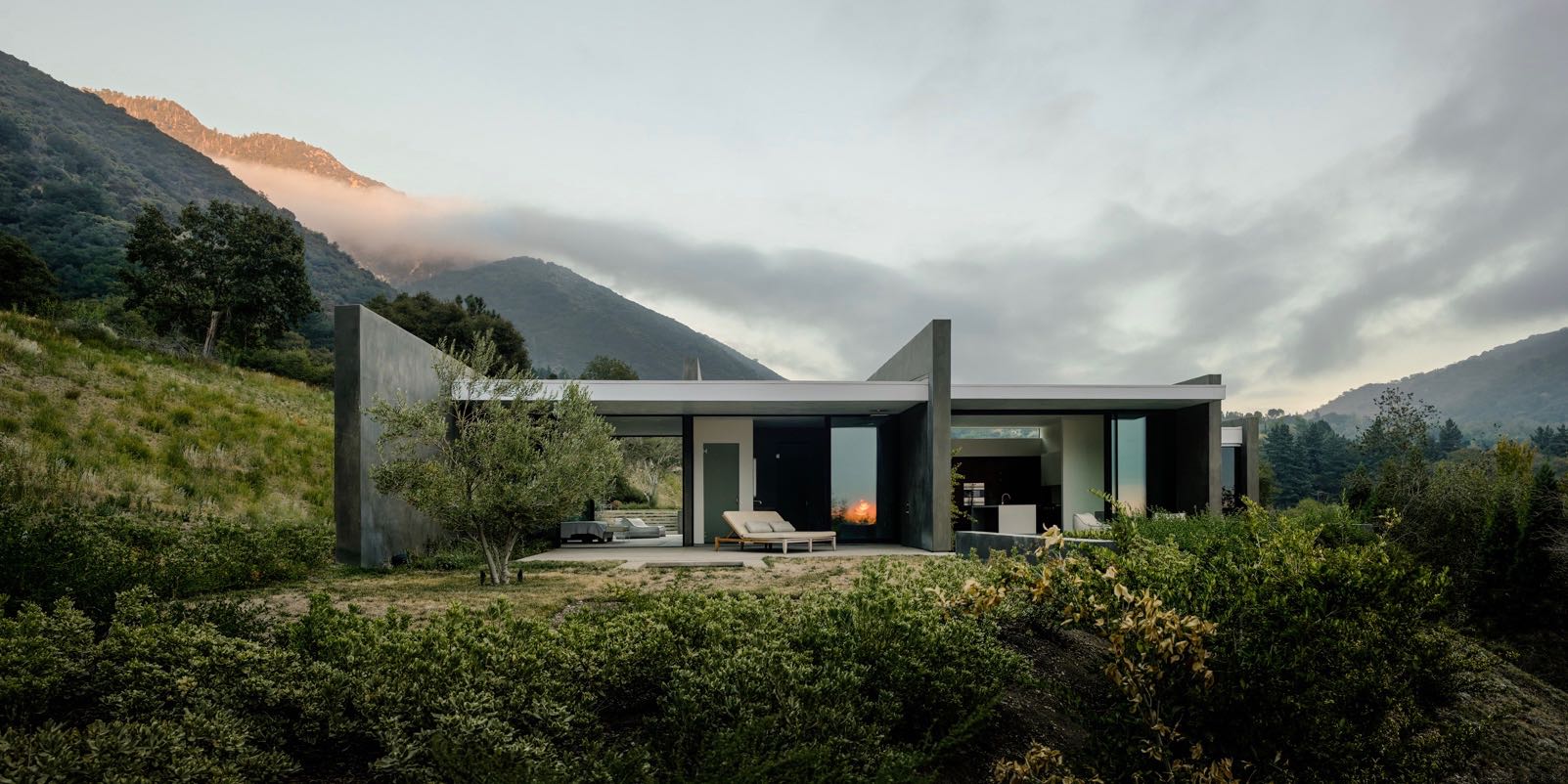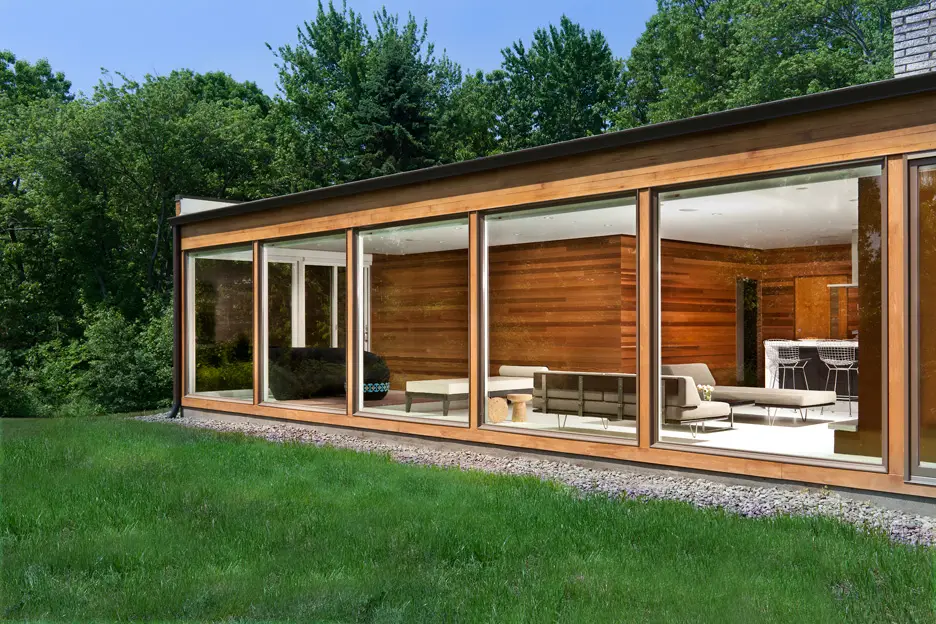
In the attempt to escape city life and connect with nature, the clients were on a hunt for a modest and minimal home that would carry the warmth of midcentury style. After finding a well-suited house surrounded by greenery and distant views of the Hudson River the clients teamed up with Jeff Jordan Architects to think of and hatch a home to reflect a less complicated way of life. Unbeknownst to them, the Hillcrest House turned out to once have been a storage structure which in turn slightly reshaped the team’s original design plans. Today Jeff Jordan Architects share with us the Hillcrest House Project.
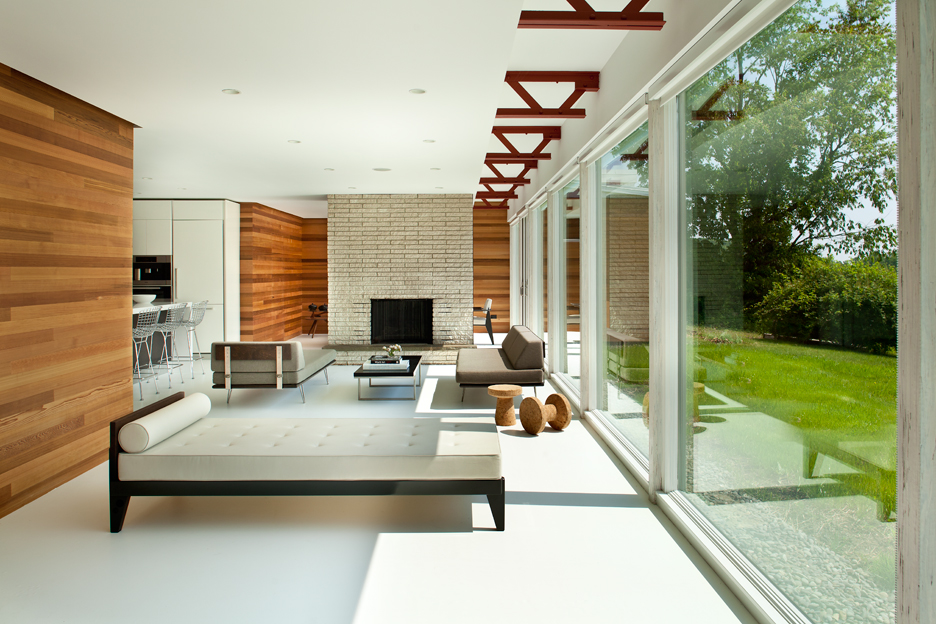
Can you tell us a bit about the story of this house/project and its owners?
The owners purchased the house from a former museum director who had lovingly cared for the place and embraced its midcentury vibe. When I first met with the owners, I commented on how much I loved the classic wood paneling, pastel bathroom tile and long format brick fireplace and suggested a surgical renovation was all that was required. Apparently they had interviewed several architects who had been much less enamored with the existing condition of the house and had advised much more invasive changes. The owners and I immediately clicked and a great collaboration began.
What did your clients ask for in their brief?
The project brief was very straightforward. The owners weren’t interested in adding rooms or changing the outward appearance of the house as much as they were keen on updating the feel and openness of the interior while establishing a stronger visual connection to the immediate surroundings and distant views of the Hudson River. They wanted a space that was crisp and clean, but with some of the warmth that is expected in a MCM home. It was to be their retreat from city life and the less complicated the better.
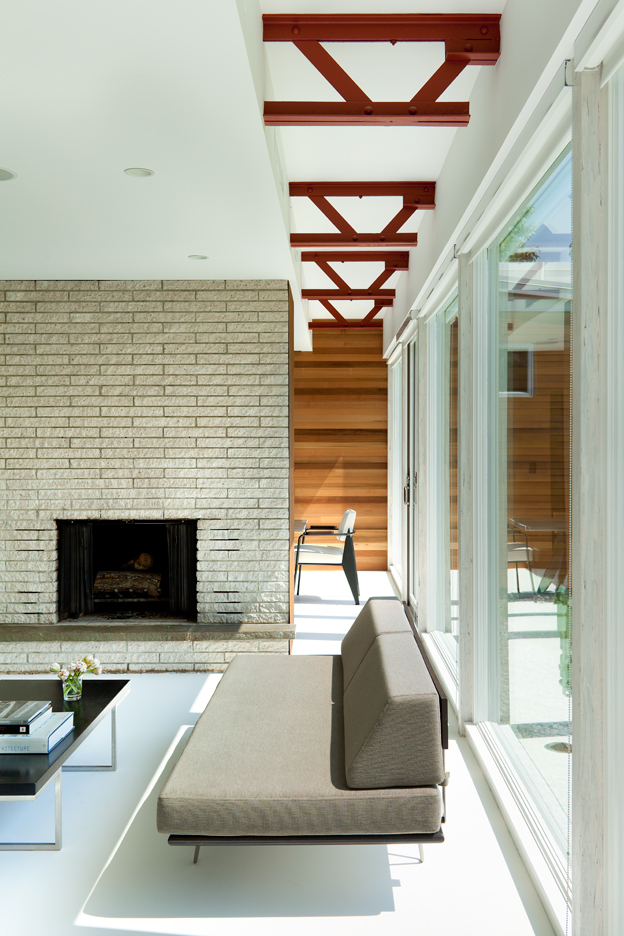
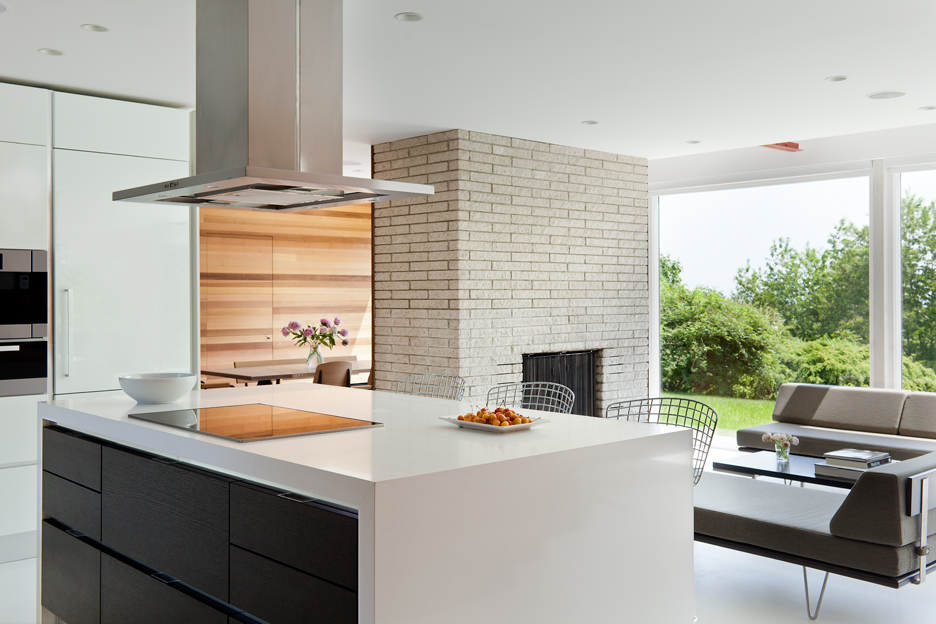
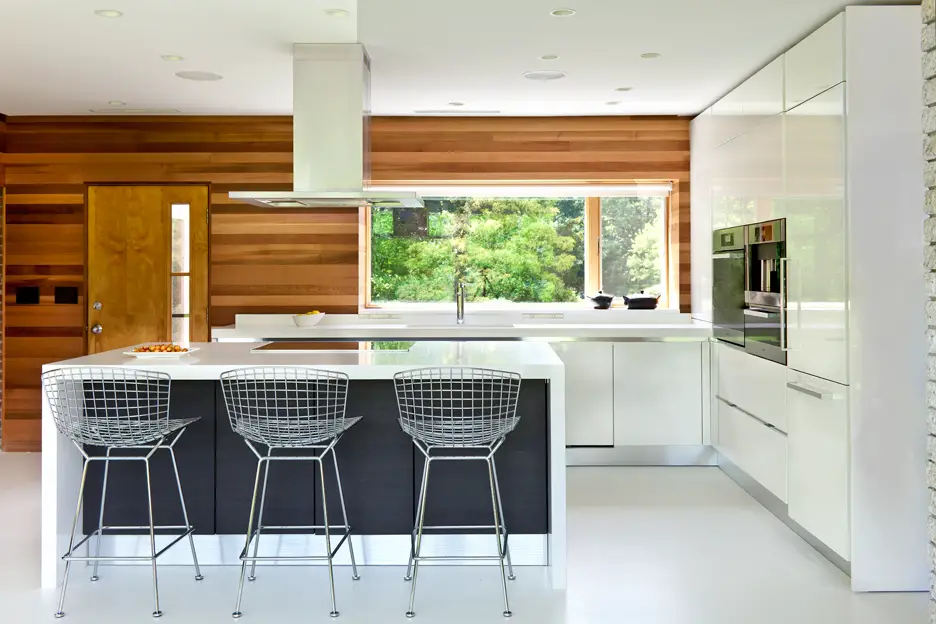
What was your approach for the project?
We wanted to leverage the underlying qualities of the house while cleaning up some of its spatial awkwardness. The laundry and mechanical room, for instance, opened directly into the small kitchen and was nearly as large. With a few minor layout tweaks, we were able to enlarge and open the kitchen while concealing the laundry and mechanical room behind a hidden door integrated into the wall paneling. We also chose to open up the entire eastern and southern walls of the living space and install floor to ceiling, wall to wall glass. That helped make the space feel larger despite its modest square footage and established a strong connection to the surrounding landscape and views.
Additionally, portions of the existing house were clad in cedar exterior siding. Our clients were interested in using a white epoxy floor to mirror the white ceilings which created a very austere space. In an attempt to add visual and material warmth to the interior, we pulled the cedar siding into the house and clad the walls of the living, dining and kitchen spaces with it creating a continuous “ribbon” of wood walls that extended from the outside to the inside and back out. It also helped reinforce the idea of blurring the boundaries between interior and exterior; a classic midcentury trait.
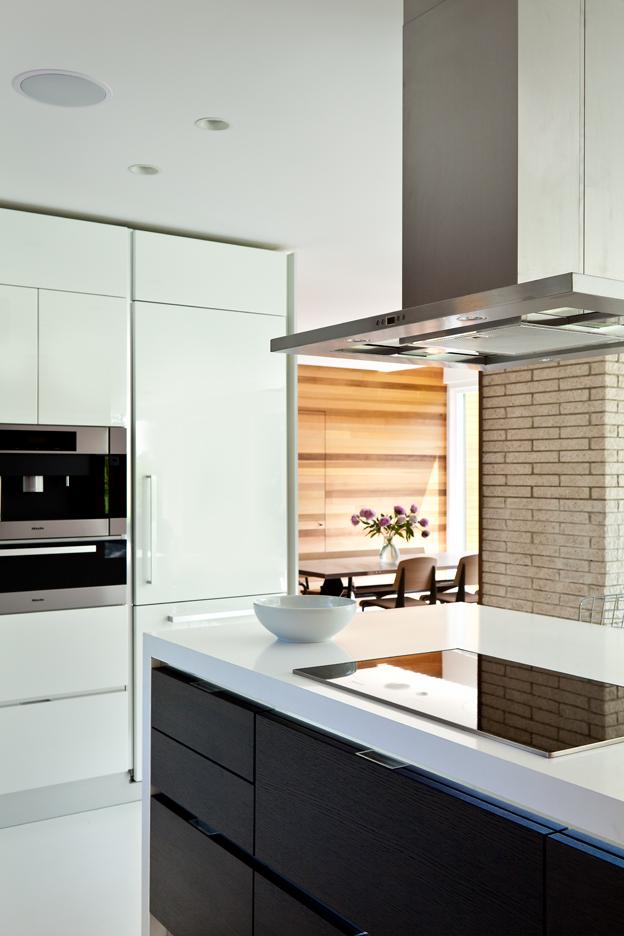
Which is your favourite/most important feature of this house and why?
After removing several layers of ceiling materials, we discovered steel roof trusses (an unusual material for a house of this size and in this location). We did some follow up research and learned that the house had actually begun its life as a storage structure for a nearby apple orchard. We couldn’t cover the trusses up after understanding the history of the place so we convinced our client to have the ceiling “pop up” around the perimeter where we had the new windows in order to expose the ends of the trusses.
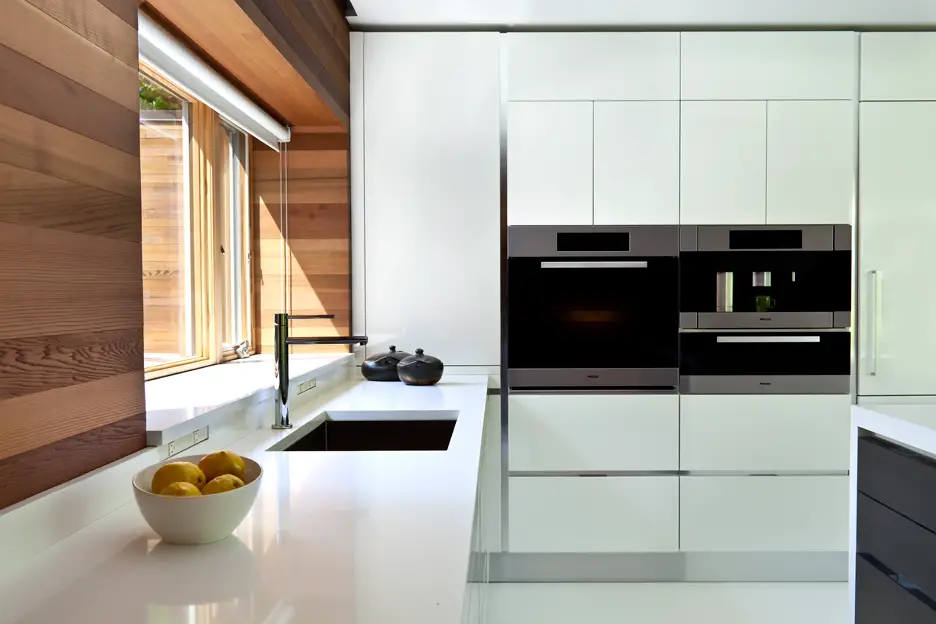
What materials have you used and why?
We used Western Red Cedar throughout the interior and on the portions of the exterior that didn’t already have it. The idea was to create a continuous wood “ribbon” that would blur the boundaries between interior and exterior while adding visual warmth to the austere interior. That austerity is a product of the white epoxy floor, painted ceiling and lacquered cabinetry. The existing long format brick fireplace remains as the only original material in the living space, but we cut it back away from the windows to allow the room and light to flow around it. The backside of the fireplace had previously been clad in wood paneling and was replaced with weathered steel as a visual counterpoint to the cedar walls.
What was the first question you asked yourself when you got the assignment?
Like most of our projects, the budget for this was tight and the expectations were high for the outcome. For us, it was a matter of making the most of what was already there while strategically deploying the money that was available. Replacing the clad exterior walls with relatively inexpensive Andersen picture windows and then devising a straightforward material palette for the remaining space allowed us to meet the budget requirements while exceeding our clients’ expectations for the look and feel of the space.
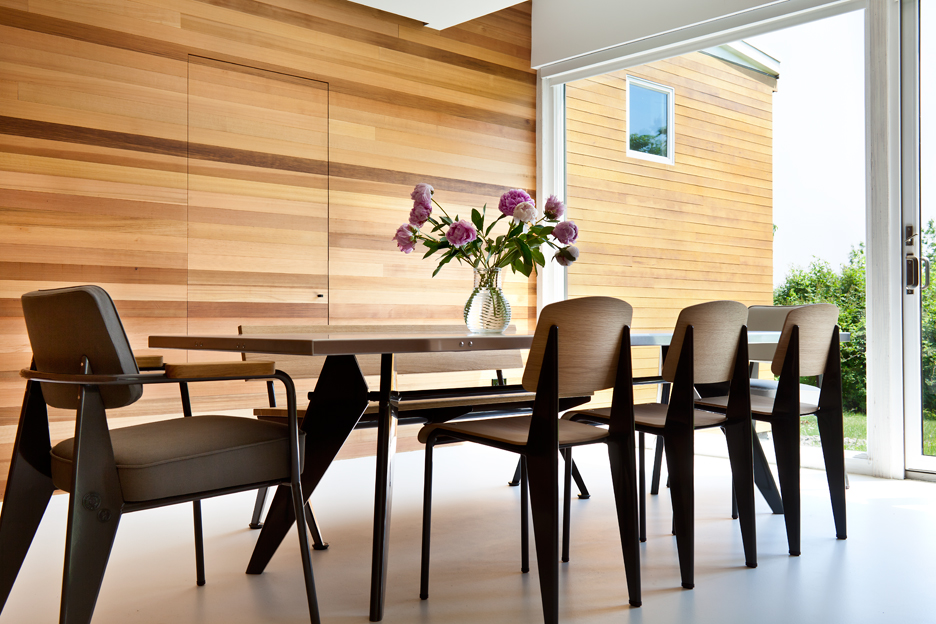
How important was the contribution of your clients, if there was any?
Very important, as always. In this case, our clients were very clear that they were looking for a retreat from the intensity of city living and wanted a space that was visually clean and connected to the landscape. They provided clear and concise feedback throughout the process and had to convince me that the white floor was a good idea. In the end, they were right and I can’t imagine the house without the strong contrast between the floor and walls.
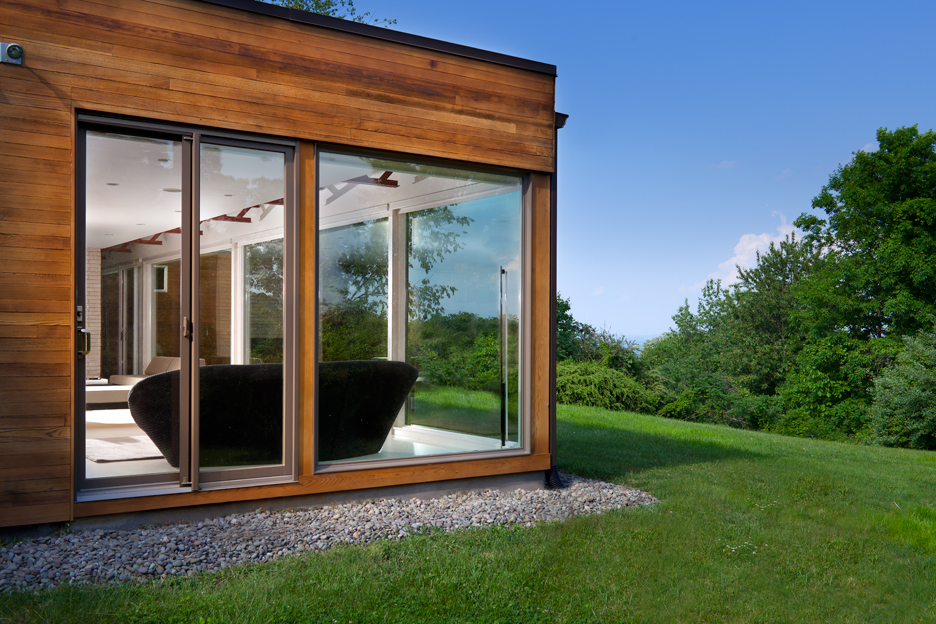
Have you found any inspiration in the midcentury period while designing the house?
The house already had midcentury qualities, but we definitely embraced that spirit with the renovations and continue to do so in much of our work. I grew up and did my undergraduate architecture studies in the Midwest and was inspired by the work of the Saarinen’s, Wright and the Eames. Later, when I worked and went to graduate school in California, I was surrounded by the work of Esherick, Neutra, Ellwood, Breur, etc. It’s hard to unsee those houses and it continues to inspire our work to this day.
